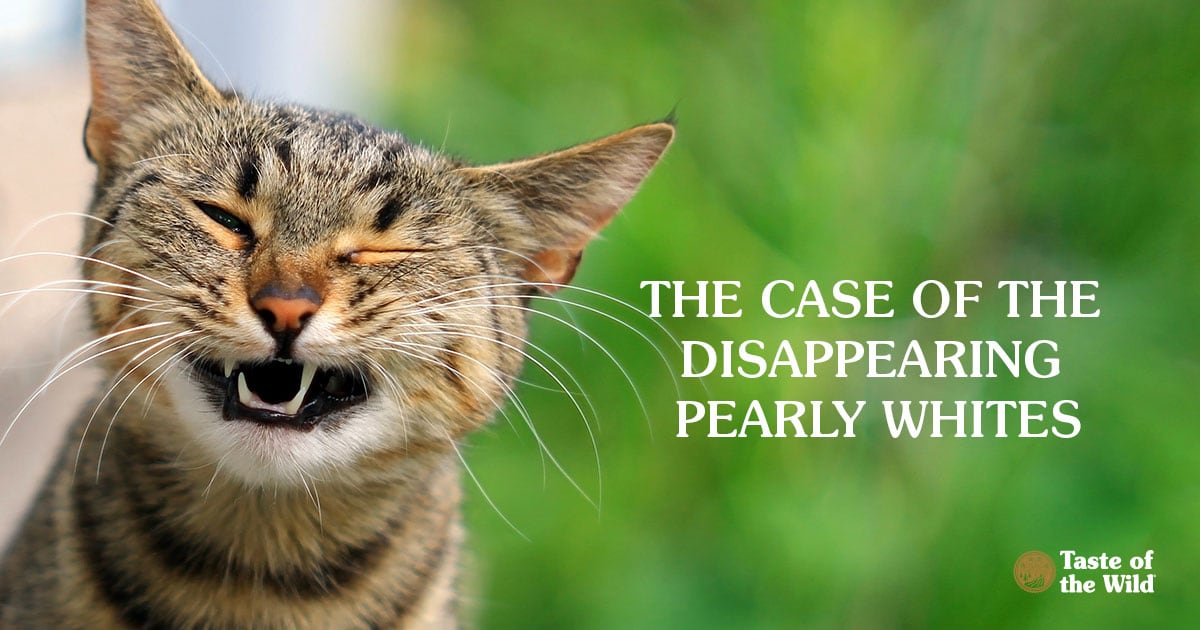
Inside the mouths of cats everywhere, teeth are disappearing. It’s not the odd tooth lost to trauma or periodontal disease; instead, it’s teeth that are essentially disintegrating. In fact, you might lift your cat’s lip and find only gum tissue where there once was a tooth.
Why is this happening? As part of Pet Dental Health Month, we’re sharing insights into this common, and often painful, cat dental condition: tooth resorption.
Although tooth resorption can occur in dogs, it’s much more common in cats, affecting between 20 percent to 70 percent of felines. It tends to occur in adult and older cats, generally sparing those under two years of age. Purebred breeds, such as Persians, Abyssinians, Siamese, Russian blues, Scottish folds, and Oriental shorthairs are more commonly affected than mixed breed cats.
What is feline tooth resorption?
It’s a syndrome in which specialized cells called odontoclasts destroy a permanent tooth from within, often progressing to every part of the tooth. The resorptive process often irreparably destroys the dentin — the dense, bony tissue that makes up the bulk of the tooth — until there’s very little or nothing left of it.
What causes this condition?
Although affected teeth may have the “moth-eaten” appearance of a human cavity on X-ray, experts don’t believe these lesions are actually cavities, which are typically caused by bacterial plaque and periodontal disease. Brushing your cat’s teeth is not likely to prevent this condition (but it can help prevent periodontal disease). In fact, the exact cause for these lesions is still unknown.
The process has been likened to the erosion that happens to the teeth of people with bulimia, from exposure to acidic stomach contents. Some have proposed that hacking up hairballs may lead to a more acidic environment in feline mouths, but this has not been proven.
Is it painful?
Cats with the condition rarely show signs of pain, especially when the resorptive lesions are below the gumline. But once the lesions spread above the gum, exposure to bacteria can lead to inflammation. And if the process has eaten into the tooth pulp cavity, which contains a nerve, we can guess that this is painful.
It’s common to see resorptive lesions where the tooth meets the gumline. On close inspection, it may appear as a bright-red indentation in the tooth. When the veterinarian touches this lesion with a probe, cats often “chatter” their jaws in reaction.
What are the signs?
Because cats are generally a stoic sort, the signs of tooth resorption are often subtle. You may notice that your cat swallows kibble without chewing or tilts his or her head to chomp exclusively on one side. Your cat may drop food out of its mouth when eating or have difficulty picking up food in the first place. When the pain becomes more severe, your cat might drool, shake its head, sneeze, rub at its face or refuse to eat.
How are resorptive lesions diagnosed and treated?
If you suspect that your cat may have oral pain, it’s best to schedule a veterinary dental exam under anesthesia with X-rays. That will enable the doctor to thoroughly examine your cat’s teeth both above and below the gumline.
If your veterinarian finds any tooth resorption, extraction may be required to relieve pain, prevent the progression of resorption and help keep your cat eating comfortably. After a few days, you might be able to give them a little human food treat for being so brave (if your vet agrees, of course).
The information in this blog has been developed with our veterinarian and is designed to help educate pet parents. If you have questions or concerns about your pet's health or nutrition, please talk with your veterinarian.
